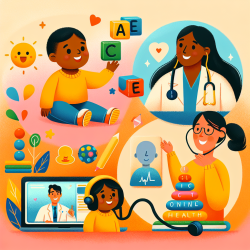In the realm of special education and early childhood development, the quest for effective, adaptable, and inclusive teaching strategies is ongoing. The publication "Language Strategies for Little Ones" by Michele Pagan and Vicky Prouty presents a comprehensive approach to language development that aligns well with the needs of children with learning disabilities and/or language disorders. This blog aims to dissect the core elements of the program, offering insights and practical advice for practitioners looking to enhance their skills or delve deeper into research-based strategies.
The essence of "Language Strategies for Little Ones" lies in its multifaceted approach to language learning. The program is built on a foundation that encompasses language comprehension, oral expression, and story grammar knowledge. Its goals are ambitious yet attainable, focusing on providing students with multi-sensory strategies that promote self-learning, integrate curriculum concepts, introduce student responsibility for learning, and develop a system that encourages parent participation.
As practitioners in the field of special education, it's crucial to recognize the value of programs that are not only research-based but also flexible and inclusive. "Language Strategies for Little Ones" is designed for use in various settings, including one-on-one sessions, small or large groups, and classroom environments. This versatility makes it an excellent tool for practitioners working in traditional settings as well as those providing online therapy services through telehealth platforms.
Here are some key takeaways and strategies from the program that can be applied to improve your practice:
- Multi-Sensory Teaching Techniques: The program emphasizes the importance of engaging multiple senses to aid learning. Incorporating visual, auditory, and kinesthetic activities can make lessons more engaging and effective for children with diverse learning needs.
- Self-Prompting Strategies: Teaching children to use self-prompting techniques can foster independence and confidence. Simple prompts or checklists can help students remember what steps to take next, reducing their reliance on adult assistance.
- Incorporating Literature-Based Intervention: The use of children's literature as a foundation for lessons not only supports language development but also introduces students to the joy of reading. Selecting books that are relevant to the curriculum can enhance comprehension and oral expression skills.
- Parent Participation: Encouraging active parent involvement is crucial for reinforcing learning outside the classroom. Providing parents with simple, actionable strategies they can use at home can make a significant difference in a child's language development journey.
- Flexibility and Adaptability: Tailoring lessons to meet the individual needs of students is essential. The program's design allows for modifications based on the students' developmental levels and learning styles, as well as the practitioner's teaching style.
While "Language Strategies for Little Ones" offers a robust framework for language development, it's important for practitioners to continually adapt and refine their approaches based on the latest research and their own professional experiences. Engaging with current literature, participating in professional development opportunities, and collaborating with colleagues can all contribute to more effective practice.
It's also worth noting the potential role of telehealth in delivering language therapy services. The COVID-19 pandemic has accelerated the adoption of online therapy services, highlighting the importance of flexibility and adaptability in our approaches. Telehealth can be a valuable tool for reaching students in remote or underserved areas, ensuring that all children have access to the support they need.
However, the transition to online therapy services also presents challenges, particularly in terms of ensuring engagement and maintaining the effectiveness of multi-sensory strategies. Practitioners must be creative in adapting activities for the virtual environment and may need to rely more heavily on parent involvement to facilitate certain tasks.
Lastly, mental health is an essential component of effective learning. Ensuring that language development programs are delivered in a supportive, inclusive, and positive environment can help foster a sense of security and well-being among students. This is especially important for children with learning disabilities and/or language disorders, who may face additional challenges in their educational journey.
In conclusion, "Language Strategies for Little Ones" provides a valuable resource for practitioners seeking to enhance their skills in language development. By adopting a holistic, flexible, and inclusive approach, we can better support the diverse needs of our students, whether in person or through telehealth services. Continual learning, adaptation, and collaboration will be key to our success in this endeavor.
To explore the original research and gain a deeper understanding of the program, please follow this link: Language Strategies for Little Ones.










